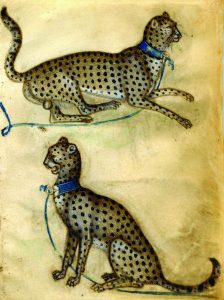Time to revisit Fra Angelico to Leonardo’ awe-inspiring exhibition from 2010 featuring Italian Renaissance drawings, but as Amanda Robinson finds out, there’s more to it than meets the eye…

With 100 works from the collections of both the British Museum and the Gabinetto Disengi e Stampi Uffizi in Florence, ‘Fra Angelico to Leonardo’ is the most significant exhibition of Italian Renaissance drawings seen in the UK for over 70 years. Disegno, the Italian word for drawing combines the concept of design and the realisation of it in a visual form. This exhibition charts the increasing importance of disegno during the period between 1400 and 1510 in Italy with particular emphasis on Florence of Leonardo da Vinci and his mentor, Verrocchio and Venice, home to the artistic dynasties of Bellini and Vivarini. In addition, examples of modern scientific analysis give fascinating insight into the techniques and creative thinking of the artists, as they experimented with a freedom not always apparent in their finished works.
Putting pen to paper
In the muted light of the British Museum’s Round Reading Room, you are surrounded by exquisite works from the artistic luminaries of Italian Renaissance, but there is one far humbler element that plays a stellar role: paper. A process perfected by the Chinese over two millenia ago, paper production increased with the invention of the printing press and the demand for the printed word in the 1400s. Cheaper and more easily obtainable than vellum, and easier to use, with quills, leadpoint, silverpoint or chalk, artists now had the freedom to explore shape and form with more creativity, on a medium that lent itself to the naturalistic approach of Renaissance art and the desire to draw observationally from real life.
Like many artists of the time, Leonardo kept journals of sketches, recording details that captured his attention, to use as reference for his larger works. An excellent example of this is the Infant Christ series of sketches by Leonardo da Vinci: a delightfully intimate observation of a toddler and his pet cat. In deft inky strokes he captures the playful nuances of movement child and cat.
The art of design
The conceptualising element of disegno encompassed the development of perspective as an artistic technique, as artists began to plan out elaborate three-dimensional tableaux inspired by the influence of classical art and architecture. You’ll marvel at the method of meticulously dividing the sheet of paper into a grid to realise almost geometric depictions of landscapes, buildings and objects.
Drawings allowed artists to experiment and refine designs for their larger scale paintings as well as to showcase their expertise. On one end of the scale, The Warrior by da Vinci is a glorious virtuoso piece probably made by the young Leonardo to show off his artistic skill to prospective clients, while another work is a tiny vignette of draped cloth dipped in hot wax and arranged to create artistic folds in a sumptuous robe.
